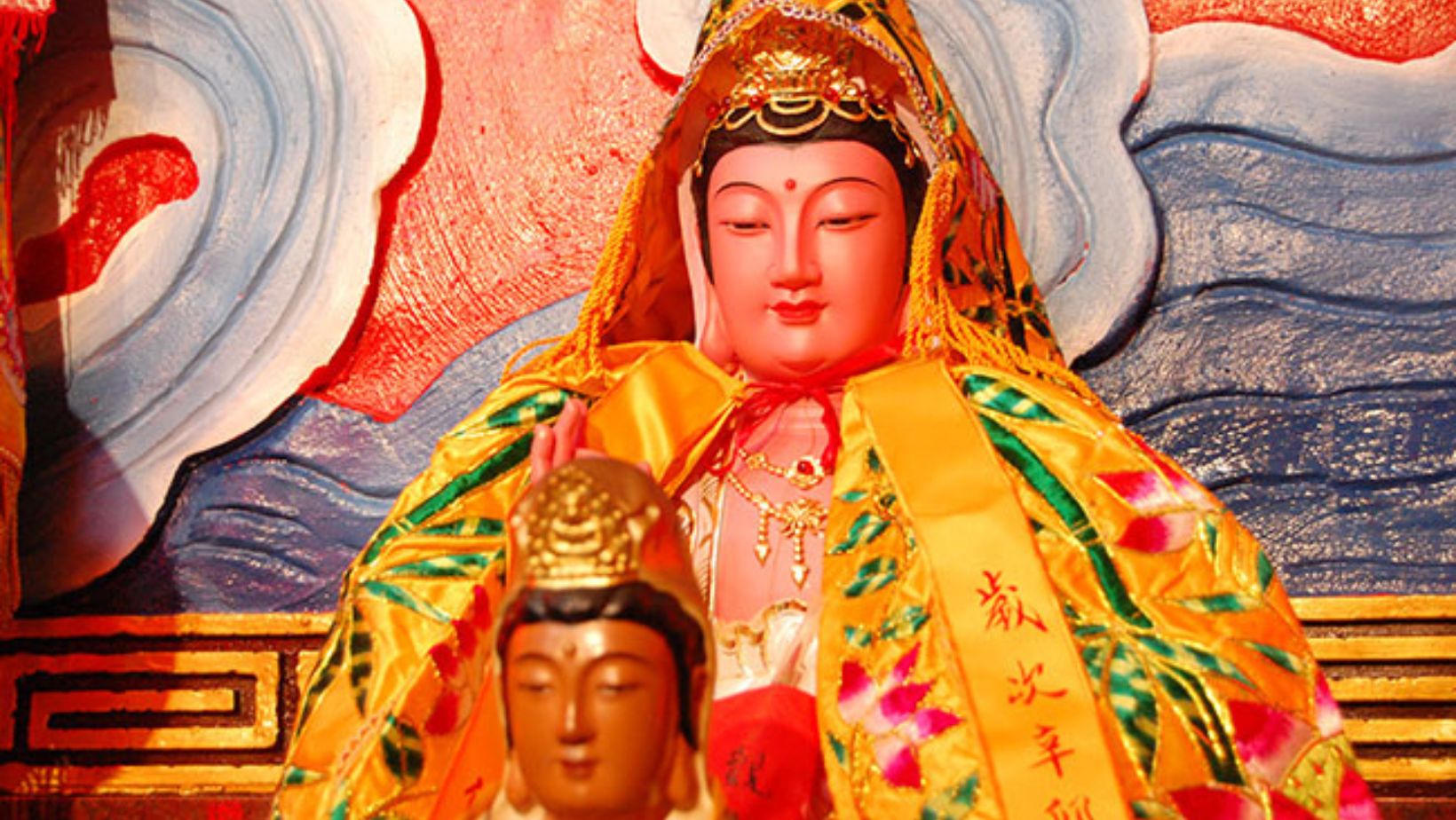Welcome to a journey through the Song Dynasty, a vibrant period in Chinese history that lasted from 960 to 1279. This era is often celebrated as a golden age of culture, innovation, and economic prosperity. The Song Dynasty laid the groundwork for many aspects of modern China, including advancements in technology and art. Its influence on philosophy, literature, and governance continues to resonate today. Join us as we explore the remarkable achievements and enduring legacy of the Song Dynasty, a time that transformed China and shaped its future.
Historical Context: The Transition from the Tang to the Song

The transition from the Tang to the Song Dynasty marked a significant turning point in Chinese history. The Tang Dynasty, which flourished from 618 to 907, faced internal strife, corruption, and external pressures, leading to its decline. Key events, such as the An Lushan Rebellion, weakened the central authority and caused social unrest. By the late 9th century, regional warlords gained power, further destabilizing the empire.
In 960, the Song Dynasty was established by Emperor Taizu, who reunited much of China. However, the new dynasty faced immediate challenges. It had to contend with powerful military leaders who had previously ruled regional territories. The Song also struggled against external threats from nomadic groups in the north. Despite these challenges, the Song Dynasty eventually flourished, setting the stage for a period of remarkable cultural and economic achievements.
Political Structure: Governance and Administration
The Song Dynasty established a sophisticated political structure that emphasized centralized governance. The central government was divided into various ministries, each overseeing specific functions like finance, justice, and military affairs. This organization allowed for more efficient administration across the empire.
A key feature of the Song political system was the prominence of scholar-officials, who were selected based on merit rather than noble birth. The civil service examination system was crucial in this process, ensuring that educated individuals held government positions. These exams tested knowledge of Confucian classics and other subjects, fostering a bureaucratic elite committed to public service.
The emphasis on meritocracy helped reduce corruption and improve governance. Scholar-officials played significant roles in local administration, helping to implement imperial policies. Their influence extended to various aspects of society, including education and culture. This political structure laid the groundwork for a stable and effective government, contributing to the overall success of the Song Dynasty.
Economic Prosperity: Trade and Innovation
The Song Dynasty is renowned for its remarkable economic growth and innovation. This period saw a significant increase in agricultural productivity, driven by advancements in farming techniques and rice cultivation. The introduction of fast-ripening rice from Southeast Asia allowed for multiple harvests each year, supporting a growing population.
Trade networks expanded extensively during the Song era. The Grand Canal became a vital transportation route, connecting northern and southern China. This facilitated the movement of goods and resources, fostering commerce between regions. Merchants thrived, and cities became bustling centers of trade.
An important innovation was the introduction of paper money, which transformed the economy. The government issued promissory notes to reduce the reliance on heavy metal coins. This made transactions easier and helped stimulate trade further. The use of paper currency contributed to a more sophisticated economic system, reflecting the dynamic nature of the Song Dynasty’s commercial landscape.
Cultural Flourishing: Art, Literature, and Philosophy
The Song Dynasty is celebrated for its remarkable cultural achievements. This period saw significant advancements in art, literature, and philosophy. Notable figures like the poet Su Shi and the painter Fan Kuan emerged, producing works that are still revered today. Their creativity reflected the vibrant cultural atmosphere of the time.
Artistic expression flourished in various forms, including landscape painting and ceramics. Song artists mastered techniques that captured the beauty of nature, emphasizing harmony and tranquility. Calligraphy also reached new heights, with elegant scripts becoming an essential part of Chinese culture.
Confucianism played a crucial role in shaping society and education during the Song Dynasty. The revival of Confucian ideals promoted moral integrity and respect for authority. Education became highly valued, with civil service exams ensuring that scholar-officials were well-versed in Confucian texts. This focus on education fostered a culture of intellectualism, which significantly influenced Chinese society for centuries to come. The legacy of this cultural flourishing is still evident in modern Chinese art and philosophy.
Technological Advancements: Innovations of the Era
The Song Dynasty was a period of significant technological innovation in China. One of the key inventions was the movable type printing press, which revolutionized the spread of knowledge. This advancement made books more accessible and encouraged literacy among the general population.
Agricultural technology also saw major improvements, such as the introduction of fast-ripening rice. This new strain allowed for multiple harvests per year, significantly boosting food production. Innovations in irrigation and farming tools further enhanced agricultural efficiency.
In addition to agriculture, advancements in industry were notable. The development of iron and steel production techniques led to stronger materials for tools and weapons. This helped support urban growth and infrastructure development.
Overall, the technological advancements of the Song Dynasty transformed various aspects of daily life. They laid the foundation for future innovations and played a crucial role in the economic prosperity of the era. The impact of these technologies is still felt in modern society.
Urbanization: Growth of Cities and Commerce
The Song Dynasty witnessed remarkable urbanization, transforming cities into bustling centers of commerce. Hangzhou and Kaifeng emerged as major urban hubs, each with vibrant marketplaces. These cities attracted traders, artisans, and scholars, creating a dynamic atmosphere for economic and cultural exchange.
Hangzhou, known for its picturesque scenery, became a commercial powerhouse. It boasted an extensive network of canals and roads, facilitating trade and transportation. Kaifeng, the capital, was famous for its grand palaces and thriving markets. Both cities showcased the era’s architectural and cultural achievements.
The rise of markets played a crucial role in urban growth. Merchants flourished, contributing to a prosperous economy. This period saw the emergence of a wealthy merchant class, which began to challenge the traditional social hierarchy.
In addition to trade, urban centers fostered innovation and cultural development. They became melting pots of ideas, art, and philosophy. The urbanization during the Song Dynasty laid the groundwork for future developments in Chinese society, making it a pivotal era in history.
Religious Diversity: Buddhism, Daoism, and Confucianism

The Song Dynasty was marked by a rich tapestry of religious beliefs. Buddhism, Daoism, and Confucianism coexisted and influenced daily life. Buddhism, having spread from India, gained popularity among the elite and commoners. Monasteries became centers of education and culture, promoting spiritual practices.
Daoism, deeply rooted in Chinese tradition, emphasized harmony with nature. It flourished alongside Buddhism, offering a unique perspective on spirituality and ethics. Daoist temples and rituals were integral to community life, reflecting the belief in balance and natural order.
Confucianism, though primarily a philosophy, shaped moral and ethical values. It focused on societal harmony, proper conduct, and filial piety. Confucian teachings became the backbone of education and governance during the Song Dynasty.
The interaction among these three belief systems enriched Chinese culture. They influenced art, literature, and social norms. Festivals often blended elements from each tradition, fostering a sense of unity. This religious diversity contributed to the cultural flourishing of the Song era, creating a legacy that shaped Chinese identity for centuries.
Military Challenges: Conflicts and Defense Strategies
The Song Dynasty faced significant military challenges, especially from external threats. The Jurchens, a nomadic tribe, posed a major danger in the early 12th century. They established the Jin Dynasty and launched invasions, leading to the fall of the Northern Song capital, Kaifeng, in 1127. This defeat marked a turning point, forcing the Song court to retreat south and establish the Southern Song Dynasty.
The Song responded with various defense strategies. They relied heavily on fortifications and developed a professional army. Despite these efforts, their military was often outmatched by the Jurchens and later the Mongols. The reliance on mercenaries and the lack of a strong cavalry further weakened their defense.
In the late 13th century, the Mongols, led by Kublai Khan, emerged as a formidable force. They capitalized on the Song’s weaknesses, eventually conquering the Southern Song by 1279. This conquest marked the end of the Song Dynasty and showcased the limitations of its military strategies. The challenges faced during this period contributed to the decline of a once-flourishing empire.
Legacy of the Song Dynasty: Influence on Modern China

The Song Dynasty left a profound legacy that continues to shape modern China. Its cultural achievements in art, literature, and philosophy laid the groundwork for many aspects of Chinese identity today. The emphasis on Confucian values during the Song era influenced education and governance, principles that still resonate in contemporary Chinese society.
Economically, the innovations of the Song period, such as the use of paper money and advancements in agriculture, set the stage for China’s modern economic development. The bustling trade networks established during this time fostered a spirit of commerce that persists in today’s global economy.
The architectural styles and technological innovations from the Song era also influence modern Chinese design and infrastructure. Furthermore, the fusion of different religious beliefs during this period created a framework for the coexistence of various cultures in China today. Overall, the Song Dynasty’s contributions are integral to understanding China’s rich history and cultural heritage, reflecting a time of prosperity and advancement that continues to inspire future generations.
Conclusion: Song Dynasty
The Song Dynasty represents a remarkable period in Chinese history, marked by cultural, economic, and technological advancements. Key themes such as artistic flourishing, innovative governance, and thriving trade networks highlight the era’s significance. The influence of Confucian values shaped society and education, while technological innovations set the stage for future developments. The legacy of the Song Dynasty continues to resonate today, informing modern Chinese identity and culture. Recognizing its contributions helps us appreciate the richness of China’s past and the foundations it laid for its present and future.
FAQs
What were the main achievements of the Song Dynasty?
The Song Dynasty is known for significant advancements in art, literature, science, and technology. Notable achievements include the development of landscape painting, the invention of movable type printing, and innovations in agriculture and industry, such as improved rice cultivation methods and the widespread use of iron and steel.
How did the Song Dynasty impact Chinese trade?
The Song Dynasty saw the expansion of trade networks, both domestically and internationally. The introduction of paper money facilitated commerce, while major cities like Hangzhou became bustling trade centers. The maritime trade routes opened new markets, connecting China with Southeast Asia and beyond.
What role did women play in Song society?
Women in the Song Dynasty had a complex role. While Confucian ideals emphasized their domestic responsibilities, some women gained prominence in family businesses or the arts. However, practices like foot binding emerged during this period, reflecting societal expectations and gender norms.
How did the Song Dynasty influence later Chinese dynasties?
The cultural, technological, and administrative advancements of the Song Dynasty laid the groundwork for future dynasties, including the Yuan and Ming. The emphasis on meritocracy through civil service exams and the revival of Confucian values continued to shape governance and societal structure in subsequent periods.
What were the reasons for the decline of the Song Dynasty?
The decline of the Song Dynasty resulted from a combination of internal strife, corruption, and external pressures. The Jurchens invaded and established the Jin Dynasty, leading to the loss of northern territories. Additionally, military challenges from the Mongols further weakened the Song, ultimately leading to its fall in the 13th century.

